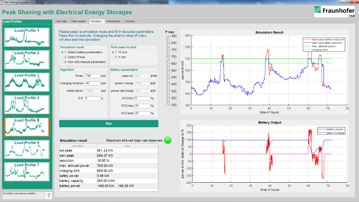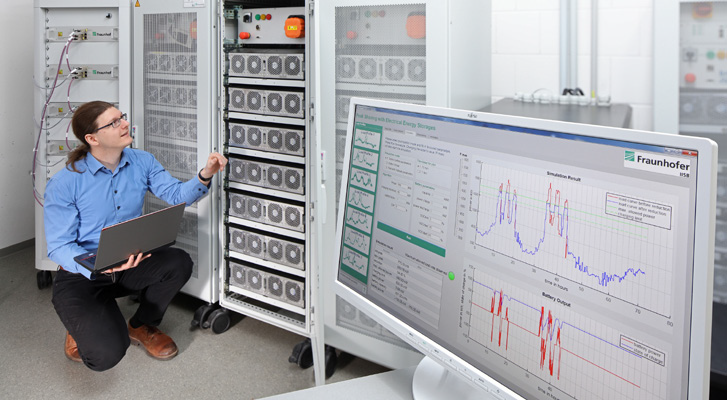New savings potential thanks to intelligent energy systems
Intensive operating of process and production equipment causes high load peaks in energy consumption and associated costs. Until now, reducing these costs has required intervention in existing operations and processing. Fraunhofer IISB’s innovative electrical energy system offers an alternative method of reducing peak loads.



As part of the energy research project SEEDs, scientists at the Fraunhofer Institute for Integrated Systems and Device Technology IISB developed a battery system with a storage capacity of 60 kWh and integrated it into the institute's own DC grid in Erlangen. Without interfering with existing work processes, peak loads were successfully reduced by approximately 10% with the aid of intelligent algorithms.
Functionality and scope of services
The scientists developed an algorithm for the optimal use of the stationary battery storage. This algorithm determines the battery power required to reduce the load from the external grid and also reacts flexibly to changing electricity prices. The MATLAB application, also developed with a graphical user interface, ensures user-friendly application and serves to design and economically evaluate peak load reduction. In addition, individual extensions with additional components, such as a cogeneration plant with heat storage, can be included in the algorithm.
First successful practical tests
The practical results at Fraunhofer IISB show a very good overlap with simulations carried out previously, and in principle, are transferable to other consumers. The integration of electrical battery storage for peak load reduction was thus successfully tested in the institute’s own infrastructure. In addition, a solution for an industrial customer has already been developed together with a commercial battery storage provider.
Outlook
The Fraunhofer IISB algorithms can be used not only to design battery systems according to demand and be optimally used for peak load reduction. Individual extensions with additional components can also be included, e.g., a combined cogeneration plant with heat storage. Yet another consideration is to make infrastructure systems more flexible for the provision of heat and cold by means of thermal storage and to integrate them into peak load reduction applications. The work is always focused on transferability to other energy systems for the broadest possible application of peak load reduction measures.
Last modified: